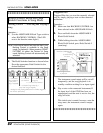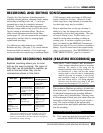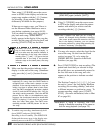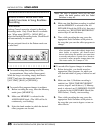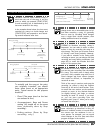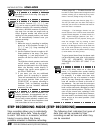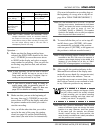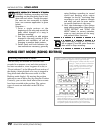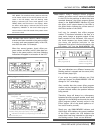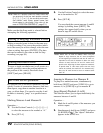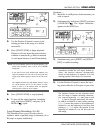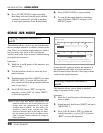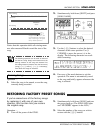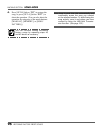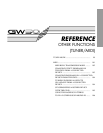
90
BACKING SECTION
SONG MODE
SONG EDIT MODE (SONG EDITING)
using Realtime recording to record
chord and Backing mute status
changes “on the fly,” and using Step
recording to put in pattern changes
and when you wish to enter events
to specific positions in the song.
4. Also, take advantage of the various
song editing operations (described in
“SONG EDITING” and “SONG JOB
MODE” below) to correct mistakes,
erase or copy sections of the song,
and perform other functions.
HINT
Also refer back to Hints #1, #3, #8 and
#9 on pages 87 and 88, since these are
also useful in Step recording.
HINT
USING BOTH REALTIME AND STEP RE-
CORDING—Realtime recording and Step
recording can be effectively used in tan-
dem with each other. Though the possi-
ble uses are too numerous to explain
here, one common application is given
below:
Operation —
1. Enter a single pattern at the
beginning of the song and record the
basic chord changes of a song in
Realtime recording.
2. Use Step recording to add pattern
changes in the song, putting in Fill In
patterns and variations, as well as
changing to another basic pattern.
3. Switch back and forth between the
two methods as necessary, generally
SONG EDIT MODE (SONG EDITING)
Viewing Recorded Events
You can easily tell whether an event has been
recorded in a measure or not and what position it
has been recorded to, since it appears as a dot (or
“Event indicator”) in the Measure/Event section of
the display (when playback of a song is stopped in
Song mode and when the cursor arrow is in the
Backing mode display). By moving the position
indicator to one of these dots (by using the Position
Controls), you can also check what event or events
have been recorded at the position. The various
types of events are indicated on the GW50 as
follows:
Effect program numbers and effect on/off
settings — These are shown in alternation
with or instead of the pattern name and
chord in the right part of the LCD. (See
note “VIEWING MULTIPLE EVENTS,”
page 91.)
Muting of backing parts — The speaker symbol to the right of
BASS, ACCOMP, and DRUMS in the display indicates that the
corresponding part will be turned on from this position.
No speaker symbol indicates that the part will be muted.
Chords — Chords are indicated
at the bottom right of the LCD.
Patterns — Pattern numbers are indicated in the PTN (Pattern) box
and the pattern name appears in the top right of the LCD.



